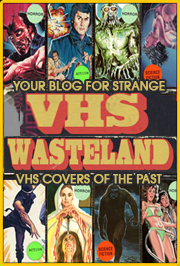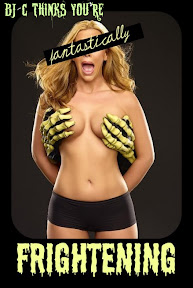Let me first state this so that I don’t end up turning this into a review: I didn’t enjoy Shock Waves that way I wanted to because I’ve only heard of the movie and had never seen it until now. Zombie SS troops seemed like a great formula but I guess I was turned off by the pacing of the movie. I think it was too slow even at the times where it should have been frantic. That being said, I think it presents the zombies quite well and I’m sure that if I saw this as a kid, I’d be freaked out on a psychological scale. There is a certain mood that Shock Waves establishes, but I think the mood is bland and at times not even present… instead, I believe the way the zombies act establishes the mood (at least the scenes involving the zombies). It’s somewhat hard to explain because it requires a visual moving image but I’ll do my best to describe it.
The main reason why these SS zombies add to the “mood” of the film is because they seem so quiet, so subtle, so smooth and gentle that it only enhances a mood that is too subtle to notice. Every time you see one of them on screen they’re never warned by shrill music or a sudden burst of energetic music, which seems to be something that modern zombie films accomplish. The 70’s was a little different because when a zombie showed up, they’d usually play the main theme of the movie but Shock Waves is different. For example: a person is walking through the river, very slowly, and a zombie rises from the water behind him. The music stays soft and seldom, then the zombie grabs the person and pulls them under the water, and the music goes from soft to almost harmonious. Since the mood is trying to create a false sense of relaxation, I guess it’s only fitting for the killing to be slow and nonchalant (but very painful). Yes, drowning is a very slow and psychologically painful death.

To go briefly off tangent, I find the way the zombies drag their victims into the water to be pretty chilling. These zombies don’t eat their victims; instead, they grab their mouths and heads and submerse them into the depths of the river or ocean. To me it was a more unnerving to see somebody disappear into the water and never see him or her come back up, as if they were being dragged into Hell.
I guess what really gives me that uneasy sensation that’s beyond the mood would be the way the zombies act or how they appear. I already briefly touched base on how they slowly rise from the water behind somebody but a lot of times they just appear across from you. As I watched the film, I couldn’t help but compare the zombie troop to an army of Michael Meyers’ or a battalion of killers. Because they don’t act like zombies and because they don’t eat their victims, they have more in common with Meyers than anything. Here, in Shock Waves, the zombies movie slowly but somehow manage to pop out of nowhere to kill their victims, they stand from afar to observe who they are about to attack and they never moan or speak. If it weren’t for the explanation, I would have never known they were zombies.

It’s creepy because these zombies actually look menacing and it be because of their attire but I think it might also have to do with their faces. Not only are they emotionless but also those pitch-back goggles give them this otherworldly presence when they are shown. It’s also an interesting choice to show the zombies in the foreground most of the time; to see these menacing beings walking, single file, from afar makes then almost seem like a bizarre illusion. I guess that would be the only mood that the film but I sort of branched off into discussing how the zombies are scary, at least for personally. There is a certain chill factor the film has but I think it might get masked over by how slow the movie is, or perhaps it might add to it. Still, it’s a very interesting approach to make the zombies seem less brain-dead and more coordinative.
Note: I guess I use the word 'otherworldly' because in some way, these zombies look like aliens with humanistic qualities.





















































 HauntedHouseChicago.com - Chicago’s Online Halloween Headquarters
HauntedHouseChicago.com - Chicago’s Online Halloween Headquarters

















